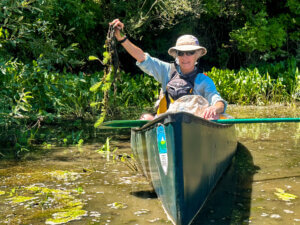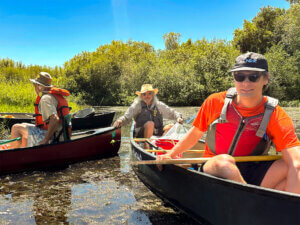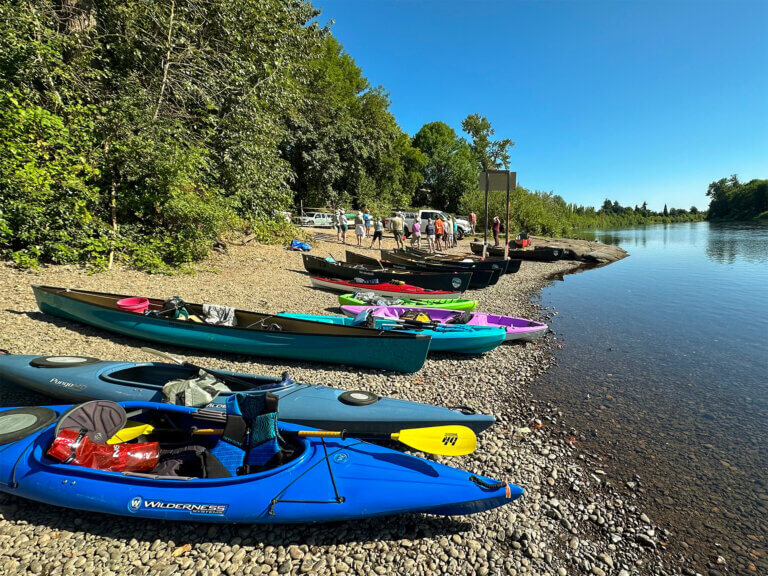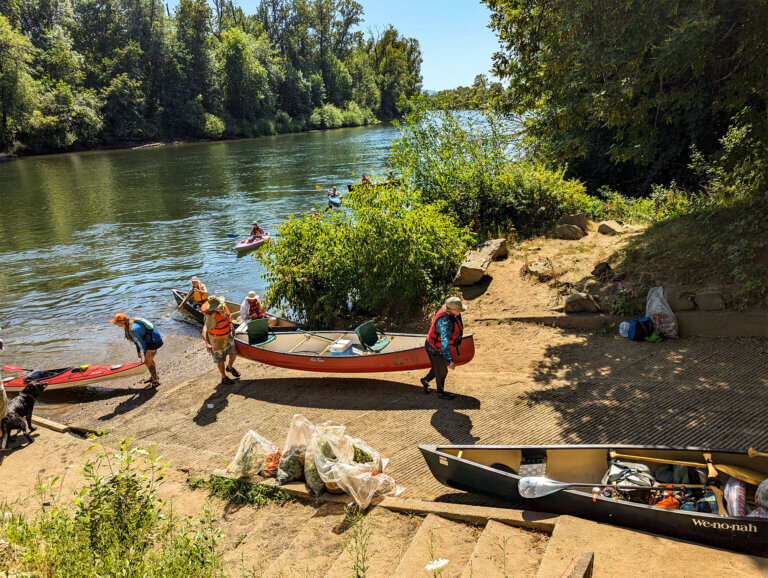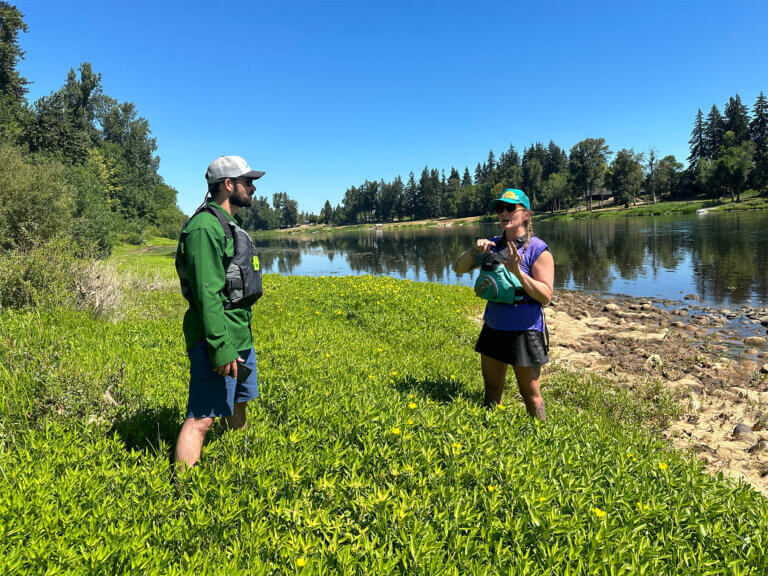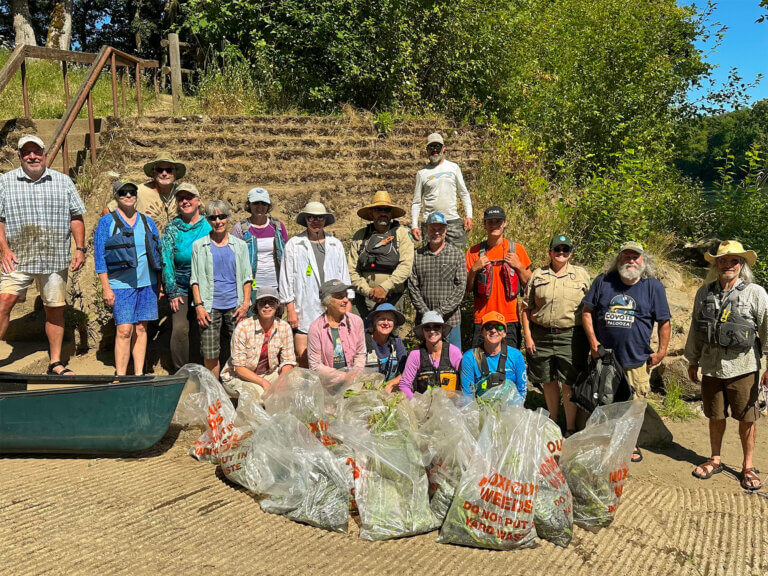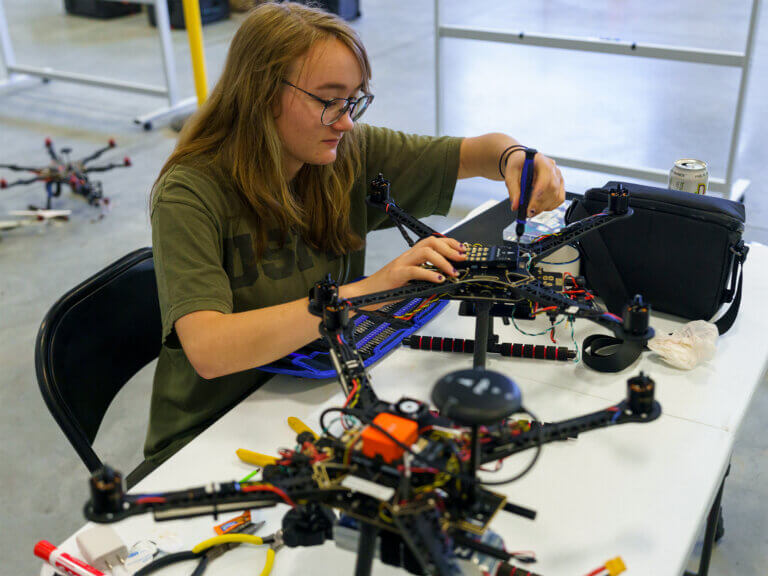Aquatic Weeds
Clearing the Willamette River
Lottery-funded grants bring together government agencies, non-profits, and volunteers to keep the Willamette open, accessible, and healthy.
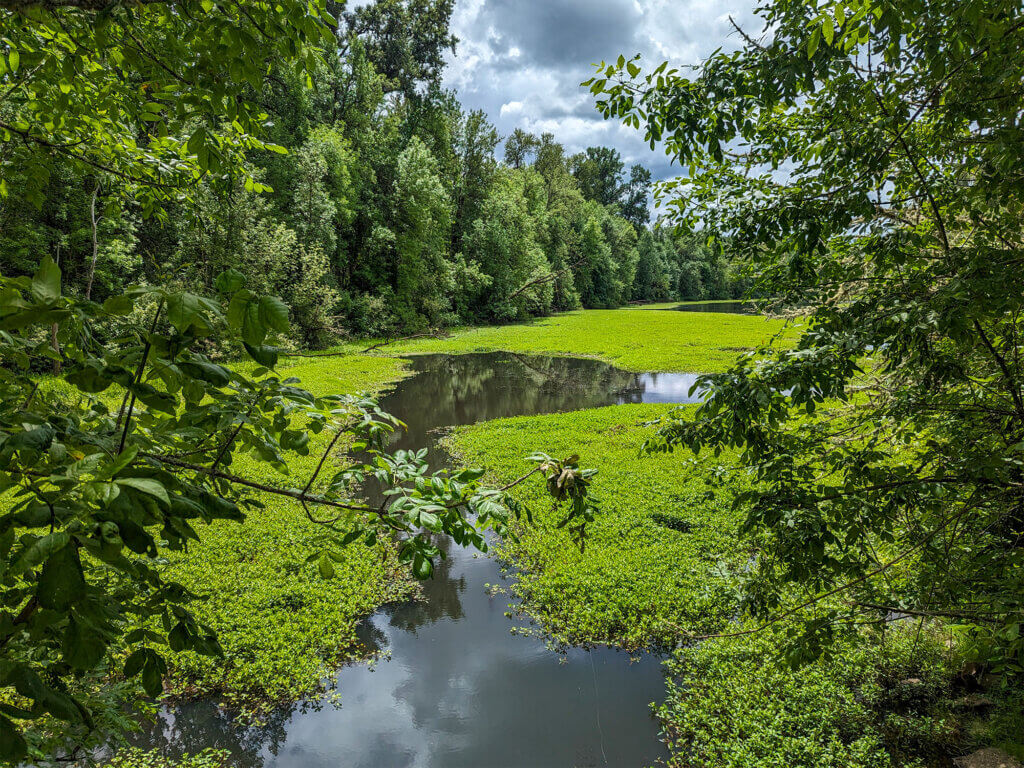 Who Owns a River?
Who Owns a River?
In the case of the Willamette, its 187 miles run through several Oregon counties, drain many watersheds (which host fully 70% of Oregon’s population), and fall under the jurisdiction of a number of government agencies. While none of them can be said to own the river, all have an interest in maintaining the river’s ecosystem. All bear responsibility for its wellbeing.
The issue becomes then, how do all of the interested parties (including the many individuals who use and love the Willamette) best use their limited resources to keep the Willamette healthy?
Working Together
Part of the answer is OWEB (the Oregon Watershed Enhancement Board). This state agency is responsible for distributing lottery dollars designated for the preservation and restoration of Oregon’s natural habitats and watersheds. Working with the Oregon Department of Agriculture, OWEB is funding grants used by organizations like soil & water conservation districts and Willamette Riverkeeper to address an urgent problem on the Willamette: the proliferation of invasive aquatic weeds.
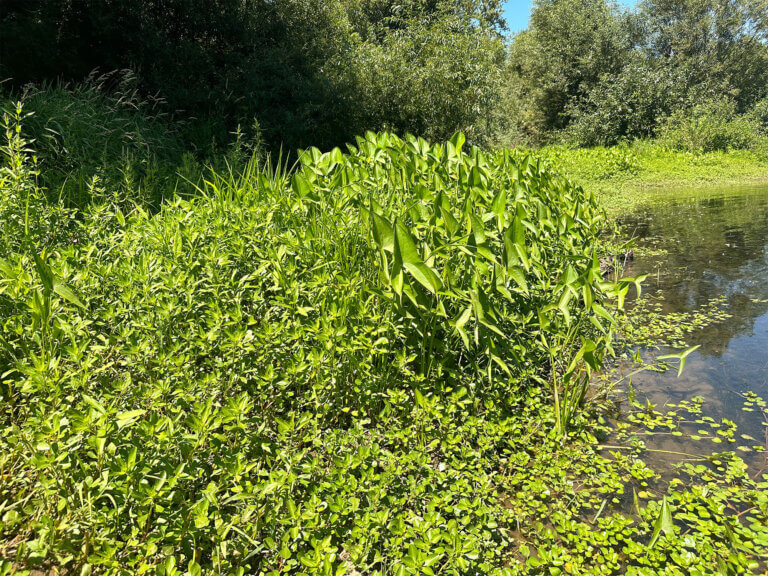
Deceptive Beauty
At a time when the notion of “rewilding” landscapes is becoming increasingly popular, many people have reconsidered their thinking about weeds. These plants often provide benefits to insects and other pollinators. They may be considered unattractive, but why not let them grow?
Unfortunately, this thinking cannot be extended to aquatic weeds. Allowing them to grow unchecked would result in dire consequences for the river. Weeds can raise water temperature, creating an inhospitable habitat for fish and the wildlife that depend on them. They can grow in mats that take over channels, making conditions difficult for water recreation and navigation. They can trap sediment and contribute to algae blooms. They can also clog irrigation intakes and negatively impact farming operations. Although sometimes lush and beautiful, their growth must be controlled.

How Did They Get Here?
It’s easy to assume that non-native species arrived here in the holds of cargo ships or by clinging to the boots of visitors from faraway places. The truth is both simpler and sadder. It is suspected that most of these invasive weeds arrived here through ornamental water gardening and the aquarium trade. Some may have been carelessly dumped into waterways; others may have “escaped” from ponds or water features. Either way, their presence in the river is a reminder of the importance of disposing of any non-native vegetation responsibly.
Being Part of the Solution
Paddle + Pull
Volunteers play a vital role — while enjoying a day on the river!
Getting to the Source
Some species of aquatic weeds can be controlled by environmentally safe herbicides. Other invasives, like ludwigia and yellow floating heart, require manual pulling. In many cases, these plants must be removed root and all. Care must be taken to avoid releasing any plant fragments. Even small stem pieces can drift downriver and root new colonies.
On the Water
When plants must be removed by-hand, “gardeners” have to go where the weeds are. In the case of the Willamette, this means on the water itself. This is where Paddle + Pull events come in. Coordinated by Willamette Riverkeeper, these events offer volunteers a chance to become part of the solution. Using their own kayaks and canoes (or using canoes provided by the organizers), volunteers get a brief orientation and then take to the river. After paddling and enjoying lunch, they move on to the pull site and gather bags of weeds for removal. It’s a great way to honor and preserve the river that already plays a large role in their lives — and have fun doing it!

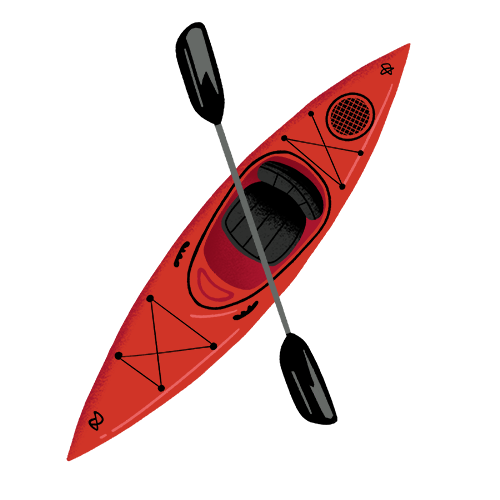
Our organization’s sole mission is to protect and restore the Willamette River.— Vanessa Youngblood, Restoration Manager, Willamette Riverkeeper Learn About Willamette Riverkeeper
More Ways to Help
If you’re not able to volunteer with Willamette Riverkeeper, there are still many ways to help the effort. First, if you use recreational watercraft, consistently clean your boat after use, inside and out. Allow several days for it to airdry or wipe it down before using again. Remember, Play/Clean/Go.
Finally, if you see what you suspect are invasive weeds, report them to the Oregon Invasive Species Hotline. Your report will provide vital early detection information. It could stop the next invasion before it starts!
Make a Hotline Report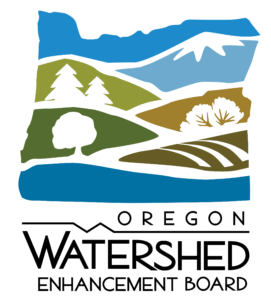 Your Lottery Play Helping Oregon
Your Lottery Play Helping Oregon
Lottery dollars distributed by the Oregon Watershed Enhancement Board (OWEB) play a vital role in supporting projects that restore and preserve sensitive habitats across the state. Since 2020, OWEB, in conjunction with the Oregon Department of Agriculture, has distributed more than $200,000 in grants to the Soil and Water Conservation Districts in both Benton and Yamhill Counties and Willamette Riverkeeper. Their efforts are just one example of the vital work lottery dollars fund to support Oregon’s unique and vital natural habitats.
Featured Projects
LOTTERY DOLLARS DOING GOOD THINGS IN YOUR COMMUNITY

Economic Growth

State Parks

Outdoor School
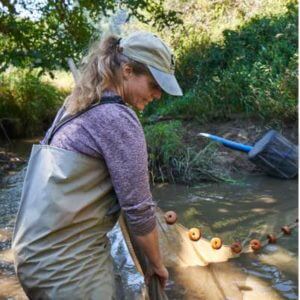
Natural Habitats

Public Schools


